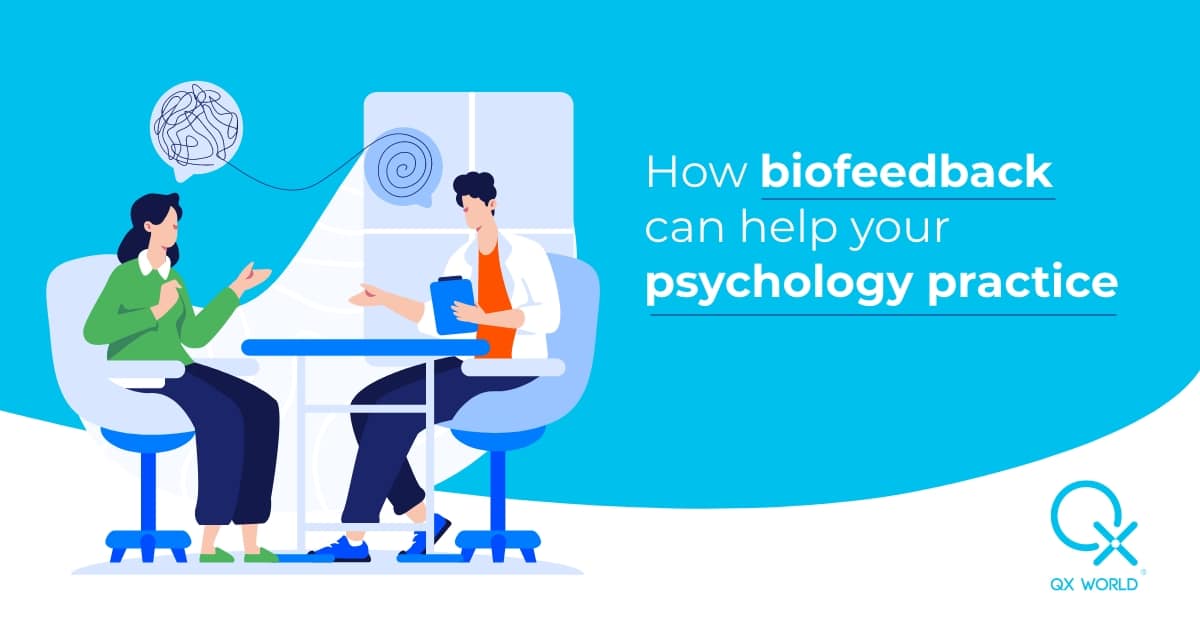
Most importantly, biofeedback can help you tremendously to achieve your health goals both mentally and physically.
As an alternative healthcare method, many healthcare professionals make use of it from general practitioners to athletic trainers, nurses, and psychologists to enhance and accompany any ongoing treatments.
In this article, we are going to specifically focus on the complementary uses of biofeedback in psychology practices.
Clinical psychology’s aim is to recognize, assess, and treat disorders of the mind.
Similarly to what biofeedback is used for, which is to measure, understand, and improve the responses of the body as well as the mind to certain stressors (stressors can be physical, metabolic, biological, mental, social, and cultural) you might be exposed to. Already there is an outline of the connection between the two.
What are the main areas in psychology where biofeedback is commonly applied as a complementary solution?
Anxiety, depression, and ADHD (Attention Deficit Hyperactivity Disorder) are chief among the conditions for which biofeedback therapy can be extremely beneficial.
As it focuses on the interrelation between thoughts, moods, and physiological responses, approaching a problem through targeting what we may think are involuntary physiological responses, making them voluntarily controllable.
For example, when you have anxiety, your muscles tend to become tense, which bodily response then keeps feeding your anxiety.
It’s a vicious circle. By recognizing this pattern, you are able to start working on easing the tension, and by doing that, also easing anxiety.
But this is just one example. There are many other ways and modalities of biofeedback commonly used to measure bodily symptoms of psychological conditions.
Essentially biofeedback provides real-time insight into the state of our minds through analyzing the state of our bodies.

What type of biofeedback are there, and why are they beneficial? Let us stick to the example of anxiety as it is the most common mental disorder worldwide.
Generally, what is the physical experience of being anxious? Is your heart racing? Do you sweat more than usual? Do you experience shortness of breath? A tightness in your chest?
There is a biofeedback for measuring each of these symptoms.
At QX World we unraveled many of the mysteries surrounding the effective assessment of anxiety through biofeedback and holistic healthcare methods.
The panels included in OMNIS – the heart of our devices – can effectively monitor and translate the different energy circulations in your body.
The biofeedback method is tailored to your exact needs, is highly personalized, and requires the patients’ active participation which is another reason why it is perfectly fit for being included in psychology practices.
Its central focus on the connections between the mind and body makes it a powerful tool to improve your health immensely and become more aware and in control of the bond between your body and mind.
We certainly hope you found this article useful, perhaps we managed to inspire you to further explore the potentials of biofeedback.
If so, don’t forget to check out the rest of the QX World website and our Facebook page for more articles like this, updates, and upcoming content. In case you have any questions for us we are eager to hear from you and keep the conversation going.
+1 (989) 681-1063
+1 (856) 322-8589